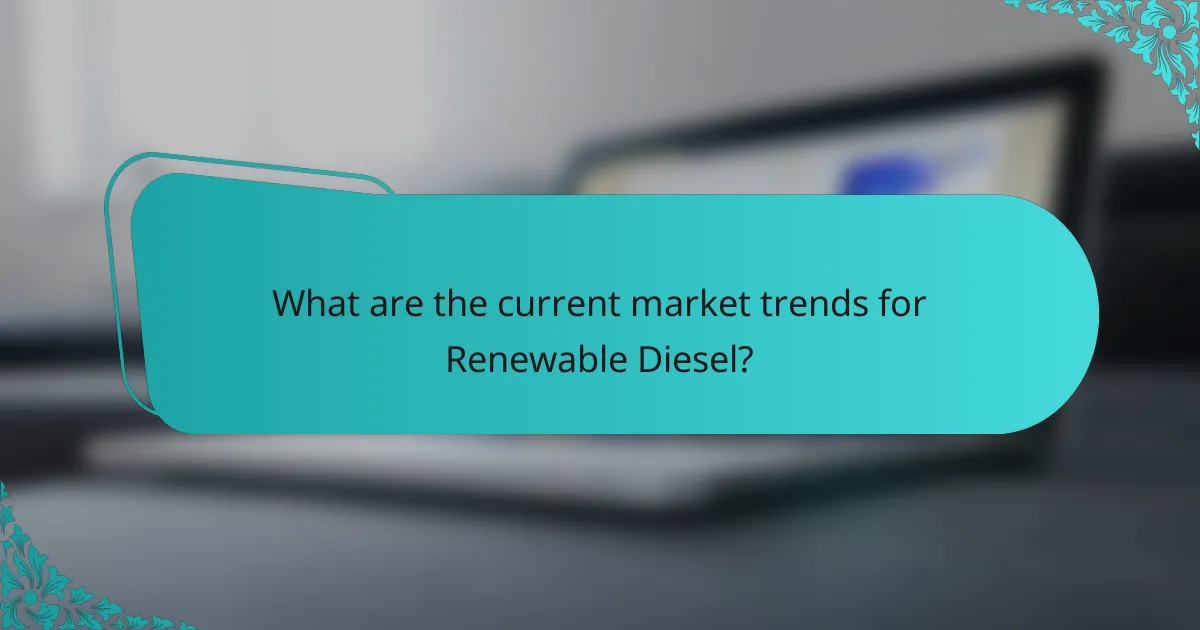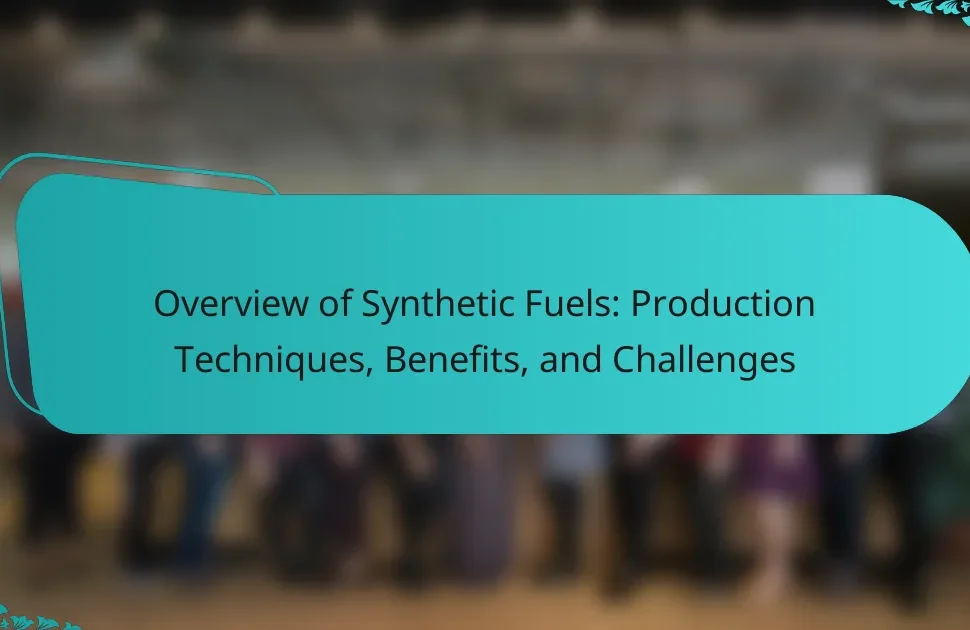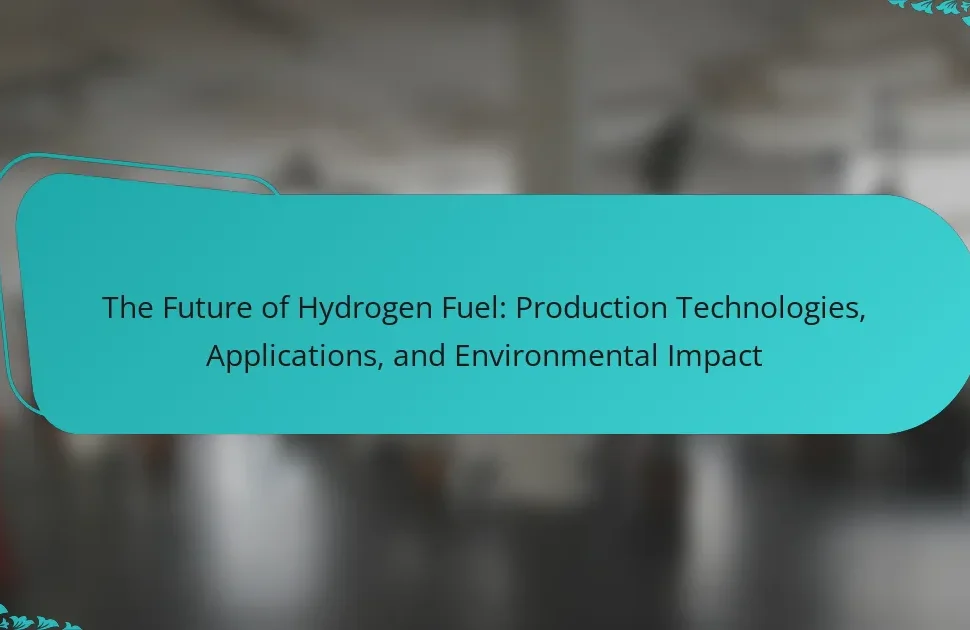
What is Renewable Diesel?
Renewable diesel is a type of biofuel produced from renewable resources. It is chemically similar to petroleum diesel. This fuel is made through processes like hydrotreating or hydrocracking. These methods convert fats, oils, and greases into a fuel suitable for diesel engines. Renewable diesel can reduce greenhouse gas emissions significantly. Studies show it can lower emissions by up to 80% compared to traditional diesel. This fuel meets the same standards as conventional diesel, making it compatible with existing infrastructure.
How is Renewable Diesel different from traditional diesel?
Renewable diesel is chemically identical to traditional diesel but differs in its production process. Traditional diesel is derived from crude oil through refining. In contrast, renewable diesel is produced from biomass sources like vegetable oils and animal fats via hydroprocessing. This process results in a cleaner-burning fuel with lower greenhouse gas emissions. Renewable diesel can be used in existing diesel engines without modification. Studies show it can reduce lifecycle greenhouse gas emissions by up to 80% compared to traditional diesel.
What are the key characteristics of Renewable Diesel?
Renewable diesel is a sustainable fuel derived from biomass sources. It has a chemical structure similar to fossil diesel, allowing for direct use in existing diesel engines. Renewable diesel is produced through processes like hydrotreatment, which converts fats and oils into hydrocarbons. This fuel is free from aromatics and sulfur, resulting in lower emissions compared to conventional diesel. Renewable diesel can improve engine performance and efficiency due to its high cetane number. It is compatible with current fuel distribution systems, making it easy to integrate into existing infrastructure. According to the U.S. Department of Energy, renewable diesel can reduce greenhouse gas emissions by up to 80% compared to petroleum diesel.
Why is the distinction between Renewable Diesel and biodiesel important?
The distinction between Renewable Diesel and biodiesel is important due to their differing chemical compositions and performance characteristics. Renewable Diesel is produced through hydroprocessing, resulting in a fuel that is chemically similar to petroleum diesel. This means it can be used in existing diesel engines without modifications. Biodiesel, on the other hand, is made from transesterifying vegetable oils or animal fats, which can lead to different combustion properties.
Additionally, Renewable Diesel has a higher energy content and lower emissions compared to biodiesel. Studies show that Renewable Diesel can reduce greenhouse gas emissions by up to 80% compared to traditional diesel. Understanding these differences helps consumers and industries make informed choices about fuel usage and environmental impact.
What are the primary production methods for Renewable Diesel?
The primary production methods for renewable diesel include hydrotreatment, transesterification, and biomass-to-liquid (BTL) processes. Hydrotreatment involves the conversion of vegetable oils or animal fats into hydrocarbons using hydrogen and a catalyst. This method produces high-quality renewable diesel that is chemically similar to petroleum diesel. Transesterification is a process where triglycerides from oils are converted into fatty acid methyl esters (FAME) and glycerol, but it typically results in biodiesel rather than renewable diesel. Biomass-to-liquid processes convert organic materials into synthetic fuels through gasification and Fischer-Tropsch synthesis. These methods ensure the production of renewable diesel that meets stringent fuel standards.
How does the hydrotreatment process work in Renewable Diesel production?
The hydrotreatment process in renewable diesel production involves the chemical reaction of hydrogen with organic feedstocks. This reaction removes impurities such as sulfur, nitrogen, and oxygen. Hydrotreatment typically occurs in a reactor under high pressure and temperature. The process utilizes catalysts to enhance the reaction efficiency. Hydrogen is often sourced from natural gas or water electrolysis. The result is a cleaner, high-quality diesel fuel. Studies indicate that hydrotreatment can increase the yield of renewable diesel significantly. This process is essential for meeting stringent fuel quality standards.
What role do feedstocks play in Renewable Diesel production methods?
Feedstocks are essential inputs in the production of renewable diesel. They provide the organic material necessary for the chemical processes that convert biomass into fuel. Common feedstocks include vegetable oils, animal fats, and waste oils. These materials undergo processes such as hydrotreating or transesterification to produce renewable diesel. The choice of feedstock impacts the yield, quality, and sustainability of the final product. For instance, using waste oils can reduce environmental impact and enhance resource efficiency. The U.S. Energy Information Administration notes that feedstock selection directly influences production costs and emissions profiles. Therefore, the role of feedstocks is crucial in optimizing renewable diesel production methods.

What are the benefits of using Renewable Diesel?
Renewable diesel offers several benefits, including reduced greenhouse gas emissions and improved air quality. It can lower carbon emissions by up to 80% compared to traditional fossil fuels. Renewable diesel is produced from sustainable feedstocks, which helps in waste reduction. This fuel is compatible with existing diesel engines, requiring no modifications. It provides a higher cetane number, leading to better combustion efficiency. Additionally, renewable diesel can contribute to energy security by diversifying fuel sources. Its use supports the agricultural sector by creating demand for feedstock crops. Overall, renewable diesel promotes a more sustainable and environmentally friendly energy landscape.
How does Renewable Diesel contribute to environmental sustainability?
Renewable diesel contributes to environmental sustainability by significantly reducing greenhouse gas emissions. It can lower lifecycle carbon emissions by up to 80% compared to conventional diesel. This reduction is achieved through the use of sustainable feedstocks, such as vegetable oils and animal fats. Renewable diesel also helps decrease reliance on fossil fuels, promoting energy independence. Additionally, it improves air quality by emitting fewer pollutants, such as particulate matter and nitrogen oxides. The production process of renewable diesel is designed to be energy efficient, further minimizing its environmental impact. Studies indicate that transitioning to renewable diesel can lead to substantial ecological benefits, supporting global climate goals.
What are the greenhouse gas emission reductions associated with Renewable Diesel?
Renewable Diesel significantly reduces greenhouse gas emissions compared to traditional fossil fuels. Studies indicate that Renewable Diesel can achieve emission reductions of up to 80% in greenhouse gases. This reduction is primarily due to the use of biomass feedstocks, which absorb carbon dioxide during growth. The lifecycle analysis shows lower emissions during production, distribution, and combustion phases. For instance, a study by the California Air Resources Board highlights these reductions in their Low Carbon Fuel Standard program. The environmental benefits are further supported by data from the U.S. Department of Energy, showcasing the positive impact on air quality and climate change mitigation.
How does Renewable Diesel impact air quality compared to fossil fuels?
Renewable diesel improves air quality compared to fossil fuels. It produces significantly lower emissions of particulate matter, nitrogen oxides, and sulfur oxides. According to a study by the California Air Resources Board, renewable diesel can reduce greenhouse gas emissions by up to 80% compared to conventional diesel. Additionally, renewable diesel burns cleaner, resulting in fewer harmful pollutants released into the atmosphere. This cleaner combustion leads to better overall air quality in urban areas. Overall, the use of renewable diesel contributes to a reduction in air pollution and promotes public health.
What economic advantages does Renewable Diesel offer?
Renewable Diesel offers significant economic advantages, including reduced greenhouse gas emissions and lower dependency on fossil fuels. It can utilize existing diesel infrastructure, minimizing transition costs. The production process often creates jobs in local economies. Renewable Diesel also qualifies for various government incentives, enhancing its market competitiveness. According to the U.S. Department of Energy, Renewable Diesel can reduce lifecycle greenhouse gas emissions by up to 80% compared to conventional diesel. This reduction can lead to lower environmental compliance costs for companies. Additionally, as global demand for cleaner fuels rises, Renewable Diesel presents new market opportunities for producers.
How does Renewable Diesel affect fuel prices?
Renewable diesel typically leads to increased fuel prices. This is due to its production costs being higher than those of conventional diesel. The feedstocks used for renewable diesel, such as vegetable oils and animal fats, often have fluctuating market prices. Additionally, the demand for renewable diesel is rising due to environmental regulations and consumer preferences. As demand increases, so does the pressure on prices. Studies indicate that in some regions, renewable diesel can be priced up to 50% higher than traditional diesel. This price difference can influence overall fuel price trends in the market.
What job creation opportunities arise from the Renewable Diesel industry?
The Renewable Diesel industry creates numerous job opportunities across various sectors. Positions include roles in production facilities, where workers are needed for the manufacturing process. Engineers and technicians are essential for maintaining equipment and ensuring operational efficiency. The industry also requires skilled labor for logistics and transportation of renewable diesel products. Research and development roles focus on improving production methods and technologies. Additionally, there are opportunities in regulatory compliance and environmental management to meet sustainability standards. According to the U.S. Department of Energy, the renewable fuels sector is expected to create up to 1.1 million jobs by 2030. This growth is driven by increased demand for cleaner energy sources and investments in renewable technology.

What are the current market trends for Renewable Diesel?
Current market trends for renewable diesel indicate significant growth and investment. The global renewable diesel market was valued at approximately $4.4 billion in 2021. It is projected to reach around $10.5 billion by 2028, growing at a CAGR of about 13.2%. This growth is driven by increasing demand for sustainable fuel alternatives and stringent environmental regulations. Major producers are expanding production capacity to meet this demand. For instance, companies like Neste and Renewable Energy Group are investing in new facilities. Additionally, the adoption of renewable diesel in transportation and aviation sectors is rising. This trend reflects a broader shift towards decarbonization in energy systems.
How is the demand for Renewable Diesel changing globally?
The demand for renewable diesel is increasing globally. This growth is driven by stricter environmental regulations and a shift towards sustainable energy sources. According to a report by the International Energy Agency, renewable diesel consumption rose by 30% in 2021. Countries such as the United States and Canada are leading in production and adoption. Additionally, Europe is expanding its renewable diesel market to meet climate goals. The rising interest in decarbonizing transport fuels is further fueling this demand. Overall, renewable diesel is becoming a significant alternative to traditional fossil fuels worldwide.
What factors are driving the growth of the Renewable Diesel market?
The growth of the Renewable Diesel market is driven by increasing demand for sustainable fuel alternatives. Environmental regulations are tightening globally, pushing industries to reduce carbon emissions. Renewable diesel offers a lower carbon footprint compared to traditional fossil fuels. Technological advancements in production processes have improved efficiency and reduced costs. Additionally, government incentives and subsidies are promoting the adoption of renewable fuels. The rising awareness of climate change impacts is influencing consumer preferences for eco-friendly products. Market analysts predict significant growth, with the renewable diesel market expected to reach USD 25 billion by 2027.
How do government policies influence the Renewable Diesel market?
Government policies significantly influence the Renewable Diesel market by establishing regulations and incentives. These policies can promote the production and use of renewable diesel through tax credits and subsidies. For example, the Renewable Fuel Standard (RFS) in the United States mandates the blending of renewable fuels, including renewable diesel, into the fuel supply.
This standard creates a guaranteed market for producers, encouraging investment in renewable diesel technologies. Additionally, low carbon fuel standards in various states incentivize cleaner fuels, further boosting demand for renewable diesel.
Policies aimed at reducing greenhouse gas emissions also drive innovation in renewable diesel production methods. As governments set stricter emissions targets, the market for renewable diesel expands.
Overall, supportive government policies are crucial for the growth and sustainability of the Renewable Diesel market.
What challenges does the Renewable Diesel market face?
The Renewable Diesel market faces several significant challenges. One major challenge is the high production costs associated with renewable diesel compared to conventional diesel. According to a 2020 report by the International Renewable Energy Agency, production costs can be 20-30% higher. Another challenge is the limited availability of feedstocks, which can restrict production capacity. The competition for feedstocks with other industries, such as food and animal feed, exacerbates this issue. Regulatory hurdles also pose challenges, as inconsistent policies across regions can create uncertainty for investors. Additionally, infrastructure for distribution and blending of renewable diesel is still underdeveloped in many areas. Market acceptance is another barrier, as consumers and businesses may be hesitant to switch from traditional fuels. These challenges collectively hinder the growth and scalability of the Renewable Diesel market.
How does competition with traditional fuels affect Renewable Diesel adoption?
Competition with traditional fuels hinders Renewable Diesel adoption. Traditional fuels often have lower prices due to established supply chains and subsidies. This price advantage makes it challenging for Renewable Diesel to compete in the market. Additionally, traditional fuels benefit from widespread infrastructure and consumer familiarity. According to the U.S. Energy Information Administration, fossil fuels still dominate transportation energy use. This dominance slows the transition to Renewable Diesel, despite its environmental benefits. The lack of incentives for consumers to switch also affects adoption rates. Overall, competition with traditional fuels creates significant barriers to the growth of Renewable Diesel.
What technological barriers exist in the Renewable Diesel industry?
Technological barriers in the Renewable Diesel industry include high production costs and limited feedstock availability. Current production methods require significant investment in advanced technologies. These technologies can be complex and require specialized knowledge. Additionally, the refining process for renewable diesel is not as efficient as traditional fossil fuels. Infrastructure for distribution and storage of renewable diesel is also underdeveloped. Moreover, there are challenges in meeting regulatory standards for emissions and performance. Research indicates that these barriers hinder widespread adoption and scalability. Addressing these issues is crucial for the industry’s growth and sustainability.
What are the future prospects for Renewable Diesel?
The future prospects for renewable diesel are promising due to increasing demand for sustainable fuels. Renewable diesel production is expected to grow significantly as regulations tighten on greenhouse gas emissions. The global renewable diesel market was valued at approximately $3.5 billion in 2020 and is projected to reach $15 billion by 2027. This growth is driven by advancements in production technologies and feedstock availability. Major oil companies are investing in renewable diesel facilities to diversify their energy portfolios. Additionally, government incentives and mandates are supporting the transition to renewable fuels. The expanding infrastructure for distribution and blending will further enhance market accessibility. As a result, renewable diesel is poised to play a crucial role in the decarbonization of the transportation sector.
How might advancements in technology shape the Renewable Diesel industry?
Advancements in technology will significantly shape the Renewable Diesel industry by improving production efficiency and reducing costs. Enhanced catalytic processes can increase yield rates from feedstocks. Innovations in feedstock processing, such as advanced pretreatment techniques, can expand the range of usable materials. Automation and digitalization can streamline operations and enhance monitoring for better quality control. Additionally, breakthroughs in enzyme technology can optimize the conversion of biomass to diesel. These technological improvements can lead to lower greenhouse gas emissions and a more sustainable energy source. According to the U.S. Department of Energy, advancements in renewable fuel technologies could increase production capacity by up to 30% by 2025.
What role will Renewable Diesel play in the transition to a low-carbon economy?
Renewable diesel will significantly contribute to the transition to a low-carbon economy. It serves as a drop-in fuel that can replace conventional diesel without requiring modifications to existing engines. Renewable diesel is produced from biomass feedstocks, which can reduce greenhouse gas emissions by up to 80% compared to fossil fuels. In 2021, the U.S. produced approximately 1.5 billion gallons of renewable diesel, demonstrating its growing adoption. This fuel helps meet renewable fuel standards and supports energy independence. Additionally, renewable diesel can utilize existing infrastructure, facilitating a smoother transition. Its use in heavy-duty transportation and industrial applications further accelerates carbon reduction efforts.
What best practices should be followed when considering Renewable Diesel?
When considering Renewable Diesel, it is essential to evaluate feedstock sources. Sustainable feedstocks minimize environmental impact. Assess the lifecycle emissions to ensure reduced carbon footprint. Compliance with industry standards ensures quality and safety. Analyze the fuel’s compatibility with existing infrastructure. Regular testing of fuel quality maintains performance efficiency. Engage with suppliers for transparency in sourcing practices. Stay updated on regulatory changes affecting renewable diesel use.
Renewable diesel is a biofuel produced from renewable resources, chemically similar to petroleum diesel, and made through processes like hydrotreating. The article explores the production methods, including hydrotreatment and biomass-to-liquid processes, and highlights the benefits of renewable diesel, such as significant reductions in greenhouse gas emissions and compatibility with existing diesel engines. Additionally, it examines current market trends, economic advantages, and challenges faced by the renewable diesel industry, providing insights into its role in promoting environmental sustainability and transitioning to a low-carbon economy.




